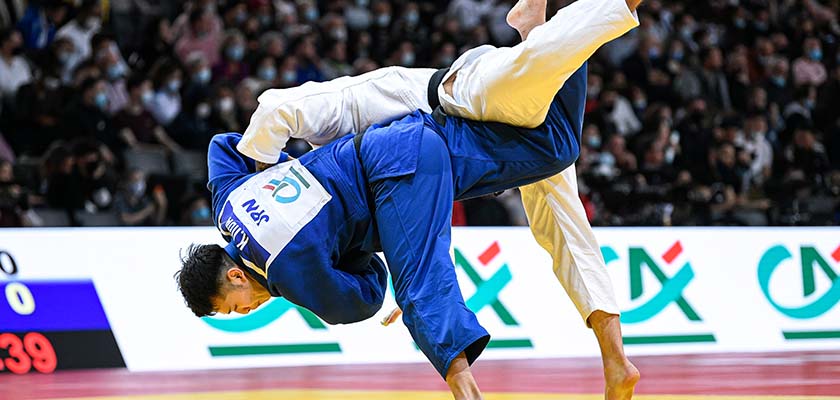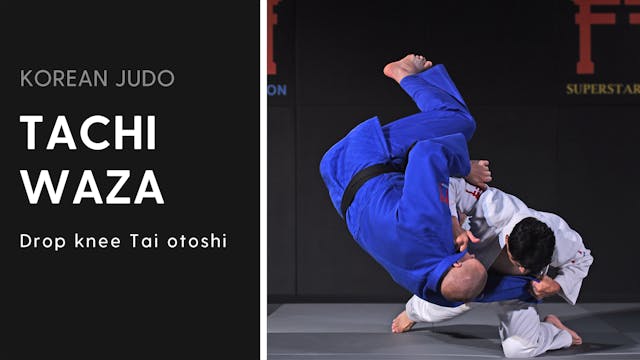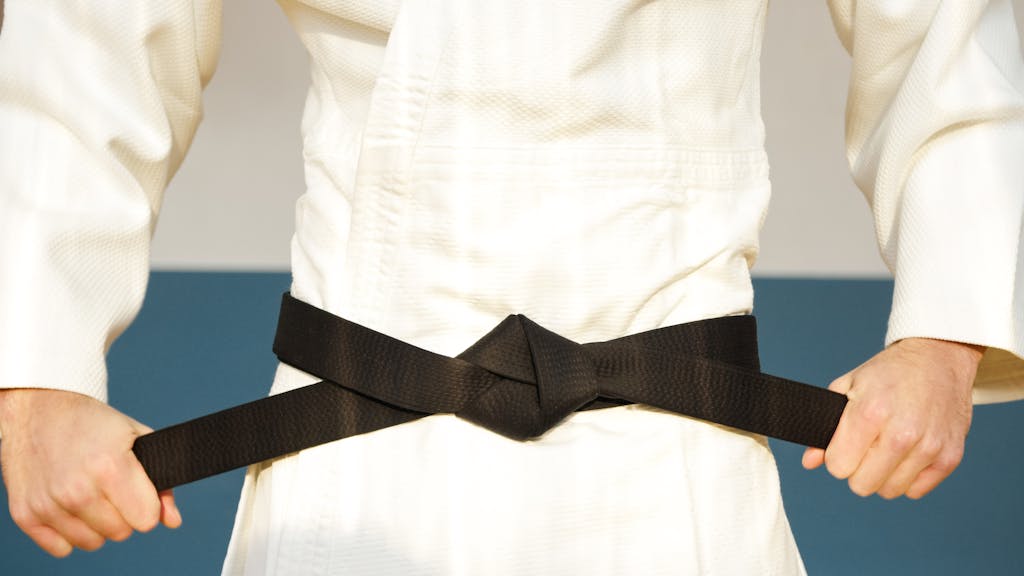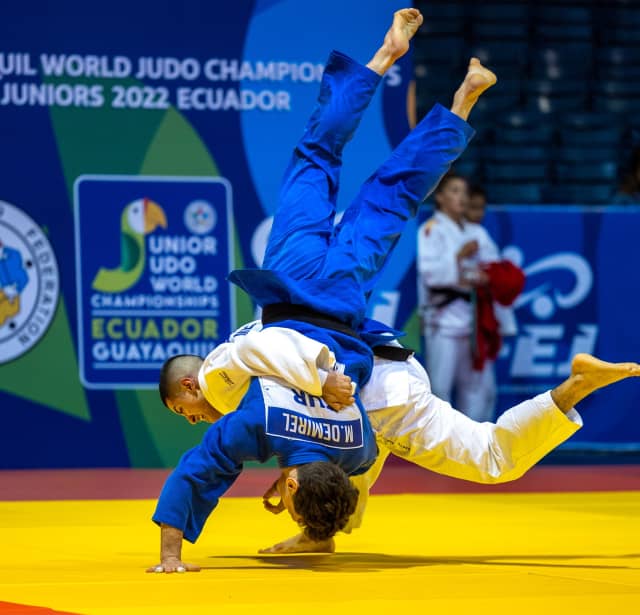1. The History of Judo: From Ancient Japan to Global Popularity
- Introduction: Explore the origins of Judo, dating back to the late 19th century when Jigoro Kano developed the sport as a modern martial art. Discuss its roots in traditional Japanese jujutsu and how it evolved into a sport practiced worldwide.
- Key Points:
- The philosophy behind Judo: “Maximum efficiency, minimum effort.”
- Jigoro Kano’s vision for promoting physical, mental, and moral development.
- Key milestones in the global spread of Judo.
- The role of Judo in the 1964 Summer Olympics.
- Conclusion: Reflect on how Judo has become a symbol of discipline and sportsmanship, bridging cultures worldwide.
2. Understanding the Basic Principles of Judo

- Introduction: Judo is not just about throwing opponents; it’s about using an opponent’s force and balance against them. Let’s dive into the core principles that make Judo unique.
- Key Points:
- Judo’s Core Philosophy: The principle of “ju” (柔) or flexibility and “ri” (理) meaning the rational application of technique.
- The Concept of Balance: Why balance is everything in Judo, and how judokas learn to maintain it while unbalancing their opponents.
- Efficiency in Technique: How efficiency leads to success in both offense and defense.
- Conclusion: Highlight how Judo teaches not just self-defense but valuable life skills, like strategic thinking and adaptability.
3. The Role of Judo in Mental and Physical Development
- Introduction: Judo isn’t just a physical sport, it also focuses on mental training. This blog will discuss how Judo shapes both the body and mind.
- Key Points:
- Mental Strength: The importance of focus, discipline, and resilience in Judo.
- Physical Fitness: How regular Judo practice builds strength, flexibility, and endurance.
- Judo as Meditation: Discuss how Judo can serve as a form of moving meditation, helping practitioners find peace and clarity.
- Conclusion: Judo’s holistic approach to personal development is what makes it so unique among martial arts.
4. The Different Judo Techniques: Throws, Grapples, and Strangles

- Introduction: Judo techniques are intricate and fascinating. This post will provide a comprehensive breakdown of the essential techniques.
- Key Points:
- The Core Throws (Nage-Waza): Popular throws like ippon seoi nage, osoto gari, and harai goshi.
- Grappling Techniques (Katame-Waza): The importance of pins, joint locks, and strangles in Judo.
- How Throws and Pins are Scored: Exploring how throws lead to points and the significance of controlling the opponent on the ground.
- Conclusion: Judo’s variety of techniques showcases the depth of the martial art, combining offense, defense, and strategy.
5. The Importance of Judo Kata: Preserving Tradition and Enhancing Skill

https://res.cloudinary.com/duu3v9gfg/image/fetch/t_fit_1920/https://78884ca60822a34fb0e6-082b8fd5551e97bc65e327988b444396.ssl.cf3.rackcdn.com/up/2022/09/6412408C-4763-4F27-9EFB-957392-1663080713.jpeg
- Introduction: Kata refers to the pre-arranged patterns of movements in Judo. This post will explore its importance in preserving Judo’s traditions and advancing practical skills.
- Key Points:
- What is Kata?: A form of practice where both the attacker and defender perform set sequences.
- Types of Judo Kata: The major kata in Judo, including Nage-no-Kata (throwing techniques), Katame-no-Kata (grappling techniques), and Kime-no-Kata (self-defense techniques).
- Why Kata is Essential: Developing technique, understanding the principles, and respecting Judo’s traditions.
- Conclusion: Kata is a vital component of Judo that connects practitioners with the history of the art while improving their practical technique.
6. The Road to Judo Black Belt: What It Takes to Reach the Top
- Introduction: Earning a black belt in Judo is a long and challenging journey. This post will outline the steps required to achieve a black belt and what it means.
- Key Points:
- The Different Judo Belts: From white belt to black belt, what each color represents in terms of skill and knowledge.
- Testing for the Black Belt: The requirements for each rank, including the combination of theoretical knowledge, technique, and practical demonstrations.
- Challenges Along the Way: Discuss common hurdles that practitioners face and the perseverance needed to overcome them.
- Conclusion: Reaching black belt level in Judo isn’t just about physical ability; it’s a testament to a person’s dedication and mental growth.
7. How Judo Benefits Children: A Parent’s Guide to Introducing Kids to Judo

- Introduction: Judo can be a great activity for children. This blog will explain why parents should consider introducing their kids to Judo.
- Key Points:
- Building Confidence: How Judo helps children become confident and assertive.
- Promoting Discipline and Respect: Judo’s focus on respect for others, etiquette, and self-control.
- Improved Physical Health: How Judo builds strength, coordination, and balance in children.
- Conclusion: Judo provides children with essential life skills that extend far beyond the dojo.
8. Judo for Self-Defense: How Judo Techniques Can Help You Defend Yourself
- Introduction: Judo’s focus on leverage and balance makes it an effective form of self-defense. This post will show how Judo’s techniques can be used for personal safety.
- Key Points:
- Throws and Takedowns: Using an opponent’s momentum to neutralize threats.
- Joint Locks and Strangles: How Judo’s grappling techniques help control or incapacitate attackers.
- Awareness and Strategy: Understanding your environment and staying one step ahead of an attacker.
- Conclusion: Judo’s practical applications for self-defense make it an ideal martial art for personal safety.
9. The Impact of Judo in the Olympics: A History of Judo’s Olympic Journey
- Introduction: Judo has been an Olympic sport since 1964. This post will explore the significance of Judo in the Olympic Games.
- Key Points:
- Judo’s Olympic Debut: The journey of Judo into the Summer Olympics and its subsequent growth.
- Notable Olympic Judo Athletes: Profiles of famous judokas who’ve made their mark in the Olympics.
- The Evolution of Judo in the Olympics: How the sport has changed in terms of rules, techniques, and international representation.
- Conclusion: Judo continues to inspire athletes around the world, with its Olympic legacy making the sport a global phenomenon.
10. Judo vs. Other Martial Arts: What Makes Judo Unique?
- Introduction: Judo is often compared to other martial arts, but what truly sets it apart? This blog will explore the differences and similarities between Judo and other popular martial arts like Karate, Taekwondo, and Brazilian Jiu-Jitsu.
- Key Points:
- Judo vs. Karate: Judo’s emphasis on throws and grappling versus Karate’s focus on strikes.
- Judo vs. Taekwondo: The difference in techniques, including how Judo focuses on balance and using an opponent’s force.
- Judo vs. Brazilian Jiu-Jitsu: A comparison of Judo’s standing techniques with BJJ’s emphasis on ground work.
- Conclusion: Judo is unique in its focus on using an opponent’s energy against them, and its emphasis on both standing and ground techniques.

